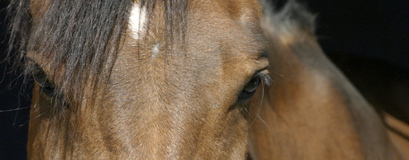Equine massage therapy can be a powerful tool in relieving the tension and restrictions that develop in a horse’s muscles and associated connective tissues.
Like us, horses develop aches and pains and areas of tension and restriction in their bodies in response to the physical demands and stresses placed on them. While some of these issues may go undetected for some time, others may manifest themselves in reduced performance, a stiffer gait, difficulty performing certain movements or altered behavior.
Sore and tight muscles are not healthy muscles – held in a state of chronic tension they restrict their own blood supply, limiting access to oxygen, nutrients and fresh tissue fluids. The related nerve endings become irritated, causing the muscle to become painful and clumsy in its ability to perform properly.
Massage therapy can help break this pain-tension cycle through the stimulation of physiological responses in the muscles, nerves and connective tissues that help promote tissue health and healing.
By promoting a more balanced, supple and resilient musculature in the horse, equine massage supports healthy biomechanical movement whereby the horse is able to use their entire body the way it was designed to work. Combined with appropriate training and conditioning, this can help to reduce the horse’s susceptibility to injury and promote optimal performance.
Purposes and aims of massage:
- Relax or stimulate the nervous system and muscles
- Increase circulation
- Decrease any swelling, edema or congestion
- Increase mobility and flexibility
- Reduce scar tissue and soft tissue adhesions
- Relieve pain and discomfort
Equine massage therapy is never a substitute for veterinary care, and works best as part of a collaborative approach in which the horse’s vet, rider and trainer, and other health-care professionals all work together to achieve the best results.



